A Coherent Performance for Noncoherent Wireless Systems Using AdaBoost Technique
Abstract
1. Introduction
2. AdaBoost Algorithm
| Algorithm 1: Two class AdaBoost [3] |
|
|
|
|
|
|
|
|
|
|
- (a)
- Fitting a classifier T(m)(x) to the training data using weights wi.
- (b)
- CalculateThe error rate is the summation of the previous process for all the samples.
- (c)
- CalculateA weight α(m) is assigned to the classifier.α(m) = log (1 − err(m)/err(m))
- (d)
- SetThe weight wi is then updated where the wrongly classified samples will have more weight.
- (e)
- Re-normalization of wi
| Algorithm 2: Multi-Class AdaBoost [1] |
|
|
|
|
|
|
|
|
|
|
- (a)
- Fitting a classifier T(m)(x) to the training data using weights wi.
- (b)
- CalculateThe error rate is the summation of the previous process for all the number of samples.
- (c)
- ComputeA weight α(m) is assigned to the classifier, the term log(K − 1) is added to consider the number of classes in this algorithm as it is a multiclass algorithm.
- (d)
- SetThe weight wi is then updated where the wrongly classified samples will have more weight.
- (e)
- Re-normalization of wi
3. Digital Modulation Classification
- Generate random input data.
- Modulate the input data using BPSK or QPSK (coherent and noncoherent).
- Add AWGN to the modulated data.
- Transmit the modulated data through a Rayleigh fading channel.
- Demodulate the noisy received data using BPSK or QPSK (coherent and noncoherent).
- Feed the demodulated noisy signal into the AdaBoost algorithm.
- Calculate the BER.
- Plot the results of the BER vs. signal-to-noise ratio (SNR).
4. Simulation Results
4.1. Binary Phase Shift Keying (BPSK)
4.1.1. Coherent BPSK
4.1.2. Noncoherent BPSK
4.2. Quadrature Phase Shift Keying (QPSK)
4.2.1. Coherent QPSK
4.2.2. Noncoherent QPSK
4.3. Eight Quadrature Amplitude Modulation (8QAM)
4.4. Sixteen Quadrature Amplitude Modulation (16QAM)
5. Conclusions
Author Contributions
Funding
Conflicts of Interest
References
- Zhu, J.; Zou, H.; Rosset, S.; Hastie, T. Multiclass AdaBoost. Stat. Its Interface 2009, 2, 349–360. [Google Scholar] [CrossRef]
- Freund, Y.; Scapire, R.E. A short introduction to boosting. JSAI 1999, 14, 771–780. [Google Scholar]
- Freund, Y.; Scapire, R.E. A decision-theoretic generalization of online learning and an application to boosting. J. Comput. Syst. Sci. 1997, 55, 119–139. [Google Scholar] [CrossRef]
- Freund, Y.; Scapire, R.E. Experiments with a new boosting algorithm. In Proceedings of the 13th International Conference on Machine Learning (ICML’96), Bari, Italy, 3–6 July 1996; pp. 148–156. [Google Scholar]
- Binder, H.; Gefeller, O.; Schmid, M.; Mayr, A. The evolution of boosting algorithms. Methods Inf. Med. 2014, 53, 419–427. [Google Scholar] [CrossRef] [PubMed]
- Breiman, L. Arcing classifiers (with discussion). Ann. Stat. 1998, 26, 801–849. [Google Scholar] [CrossRef]
- Breiman, L. Prediction games & arcing algorithms. Neural Comput. 1999, 11, 1493–1517. [Google Scholar] [CrossRef]
- Friedman, J.; Hastie, T.; Tibshirani, R. Additive logistic regression: A statistical view of boosting (with discussion). Ann. Stat. 2000, 28, 337–407. [Google Scholar] [CrossRef]
- Ratliff, N.D.; Silver, D.; Bagnell, J.A. Learning to search: Functional gradient techniques for imitation learning. Auton. Robots 2009, 27, 25–53. [Google Scholar] [CrossRef]
- Wu, S.; Nagahashi, H. Penalized AdaBoost: Improving the generalization error of gentle AdaBoost through a margin distribution. IEICE Trans. Inf. Syst. 2015, E98-D, 1906–1915. [Google Scholar] [CrossRef]
- Jordan, M.I.; Mitchell, T.M. Machine learning: Trends, perspectives, and prospects. Science 2015, 349, 255–260. [Google Scholar] [CrossRef]
- Zhang, Y.; Sow, D.; Turaga, D.; van der Schaar, M. A fast online learning algorithm for distributed mining of bigdata. ACM Sigmetrics 2014, 41, 90–93. [Google Scholar] [CrossRef]
- Linero, A.R. Bayesian regression trees for high-dimensional prediction and variable selection. J. Am. Stat. Assoc. 2018, 113, 626–636. [Google Scholar] [CrossRef]
- Ridgeway, G. Looking for lumps: Boosting and bagging for density estimation. Comput. Stat. Data Anal. 2002, 38, 379–392. [Google Scholar] [CrossRef]
- Wu, K.; Hou, W.; Yang, H. Density estimation via the random forest method. Commun. Stat. Theory Methods 2018, 47, 877–889. [Google Scholar] [CrossRef]
- Wang, H.; Wang, J.; Zhou, L. A survival ensemble of extreme learning machine. Appl. Intell. 2018, 48, 1846–1858. [Google Scholar] [CrossRef]
- Miller, P.J.; Lubke, G.H.; McArtor, D.B.; Bergeman, C.S. Finding structure in data using multivariate tree boosting. Psychol. Methods 2016, 21, 583–602. [Google Scholar] [CrossRef] [PubMed]
- Lu, K.; Zhang, W.; Sun, B. Multidimensional Data-Driven Life Prediction Method for White LEDs Based on BP-NN and Improved-Adaboost Algorithm. IEEE Access 2017, 5, 21660–21668. [Google Scholar] [CrossRef]
- Seibold, H.; Bernau, C.; Boulesteix, A.-L.; De Bin, R. On the choice and influence of the number of boosting steps for high-dimensional linear cox-models. Comput. Stat. 2017, 33, 1195–1215. [Google Scholar] [CrossRef]
- Liu, T.; Guan, Y.; Lin, Y. Research on modulation recognition with ensemble learning. EURASIP J. Wirel. Commun. Netw. 2017, 179, 1–10. [Google Scholar] [CrossRef]
- Ben Chikha, W.; Chaoui, S.; Attia, R. Performance of AdaBoost classifier in recognition of superposed modulations for MIMO TWRC with physical-layer network coding. In Proceedings of the 25th International Conference on Software, Telecommunications and Computer Networks (SoftCOM2017), Split, Croatia, 21–23 September 2017; pp. 1–5. [Google Scholar]
- Khieu, H.-T.; Le, D.-K.; Nguyen, B.V. On the performance analysis of a DCSK system under the pulse jamming environment. PLoS ONE 2018, 13, 1–11. [Google Scholar] [CrossRef]
- Herceg, M.; Kaddoum, G.; Vranjes, D.; Soujeri, E. Permutation Index DCSK Modulation Technique for Secure Multiuser High-Data-Rate Communication Systems. IEEE Trans. Veh. Technol. 2018, 67, 2997–3011. [Google Scholar] [CrossRef]
- Nguyen, B.V.; Jung, H.; Kim, K. On the Antijamming Performance of the NR-DCSK System. Secur. Commun. Netw. 2018, 1–9. [Google Scholar] [CrossRef]
- Kaddoum, G.; Tran, H.-V.; Kong, L.; Atallah, M. Design of Simultaneous Wireless Information and Power Transfer Scheme for Short Reference DCSK Communication Systems. IEEE Trans. Commun. 2016, 65, 431–443. [Google Scholar] [CrossRef]
- Kumar, M.A.; Babu, R.S. A Novel SUI Modelling for Multiuser OFDM-DCSK Modulation based Communication System. Int. J. Adv. Eng. Res. Dev. 2017, 4, 345–356. [Google Scholar] [CrossRef]
- Schapire, R.E. A brief introduction to boosting. In Proceedings of the 16th International Joint Conference on Artificial Intelligence (IJCAI’99), Stockholm, Sweden, 31 July–6 August 1999; pp. 1401–1406. [Google Scholar]
- Tang, J.; Deng, C.; Huang, G.-B. Extreme learning machine for multilayer perceptron. IEEE Trans. Neural Netw. Learn. Syst. 2016, 27, 809–821. [Google Scholar] [CrossRef] [PubMed]
- Schapire, R.E.; Freund, Y.; Bartlett, P.; Lee, W.S. Boosting the margin: A new explanation for the effectiveness of voting methods. Ann. Stat. 1998, 26, 1651–1686. [Google Scholar] [CrossRef]
- Ahmadi, N.; Berangi, R. A template matching approach to classification of QAM modulation using genetic algorithm. Int. J. Signal Process. 2009, 3, 95–109. [Google Scholar]
- Li, P.; Zhang, Z.; Wang, X.; Xu, N.; Xu, Y. Modulation recognition of communication signals based on high order cumulants and support vector machine. J. China Univ. Posts Telecommun. 2012, 19, 61–65. [Google Scholar] [CrossRef]
- Jain, A.K.; Duin, P.W.; Mao, J. Statistical pattern recognition: A review. IEEE Trans. Pattern Anal. Mach. Intell. 2000, 22, 4–37. [Google Scholar] [CrossRef]
- Xue, S.; Ma, Y.; Yi, N.; Tafazolli, R. Unsupervised Deep Learning for MU-SIMO Joint Transmitter and Noncoherent Receiver Design. IEEE Wirel. Commun. Lett. 2018, 1–4. [Google Scholar] [CrossRef]

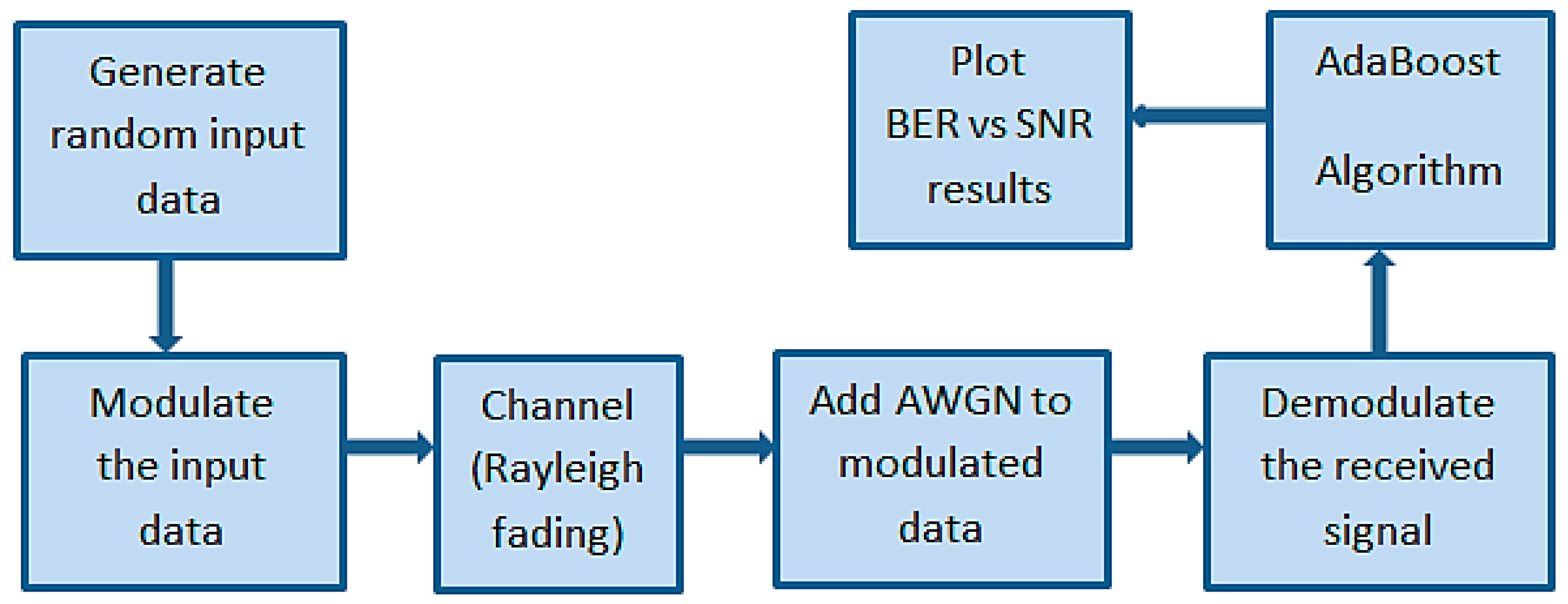


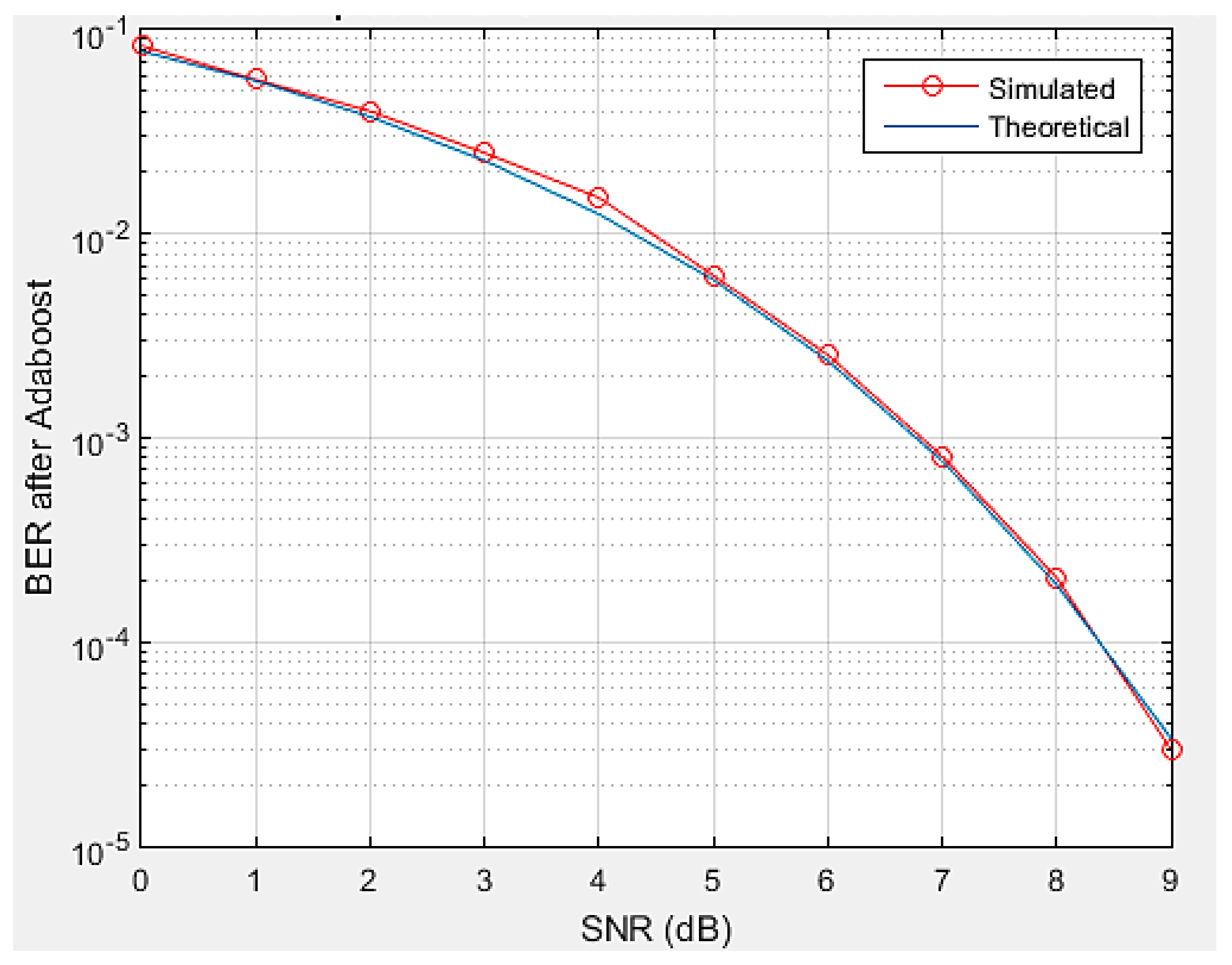
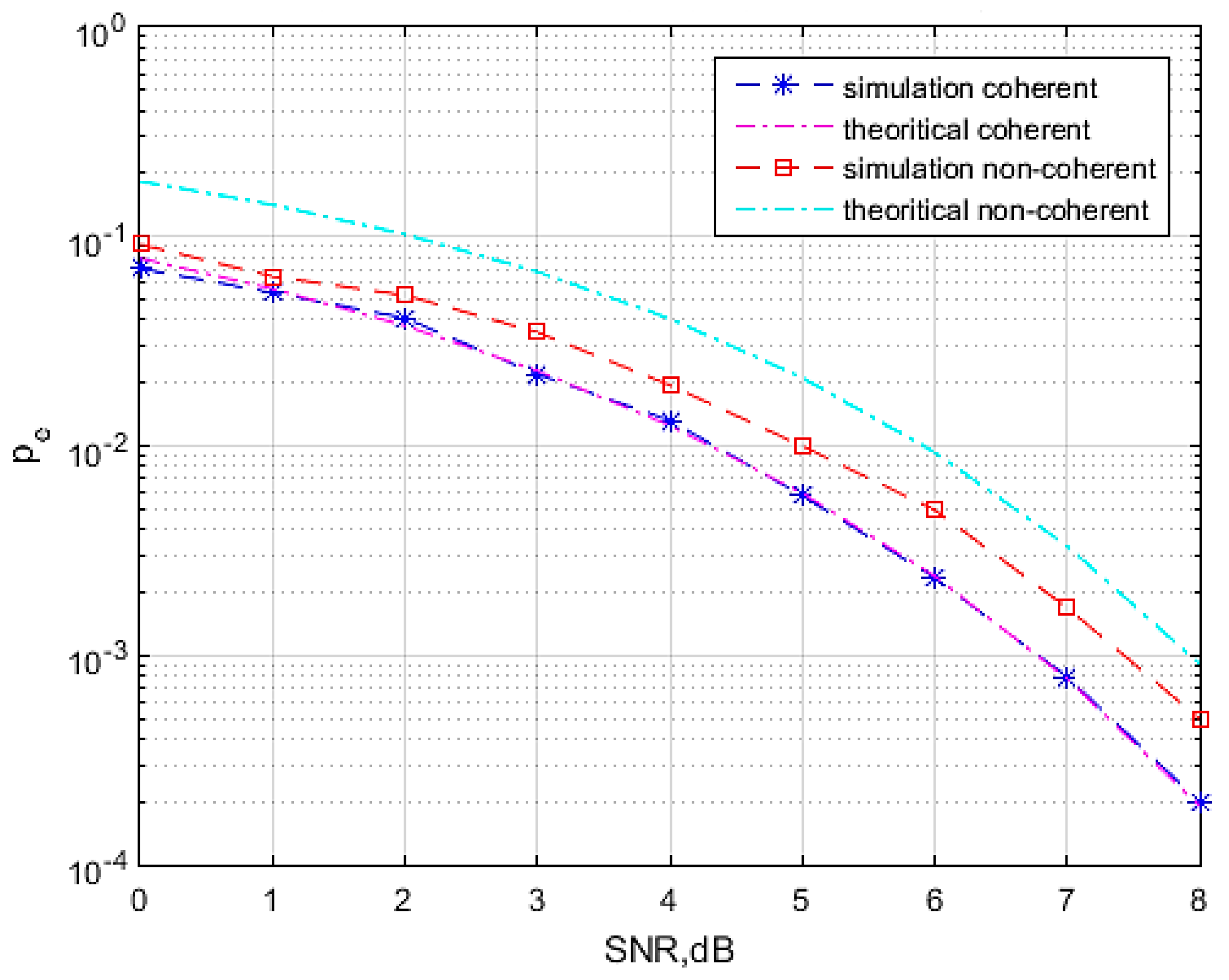

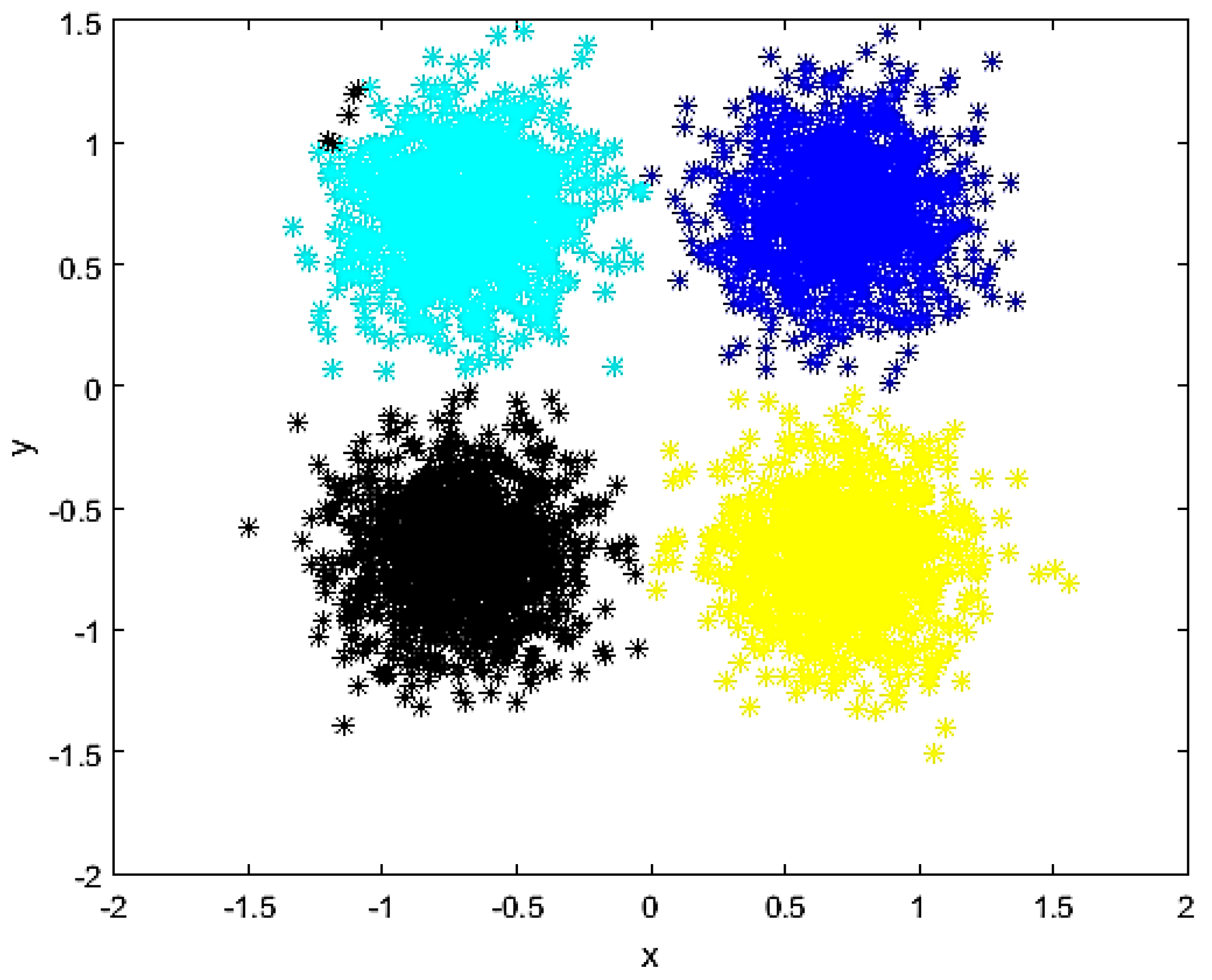
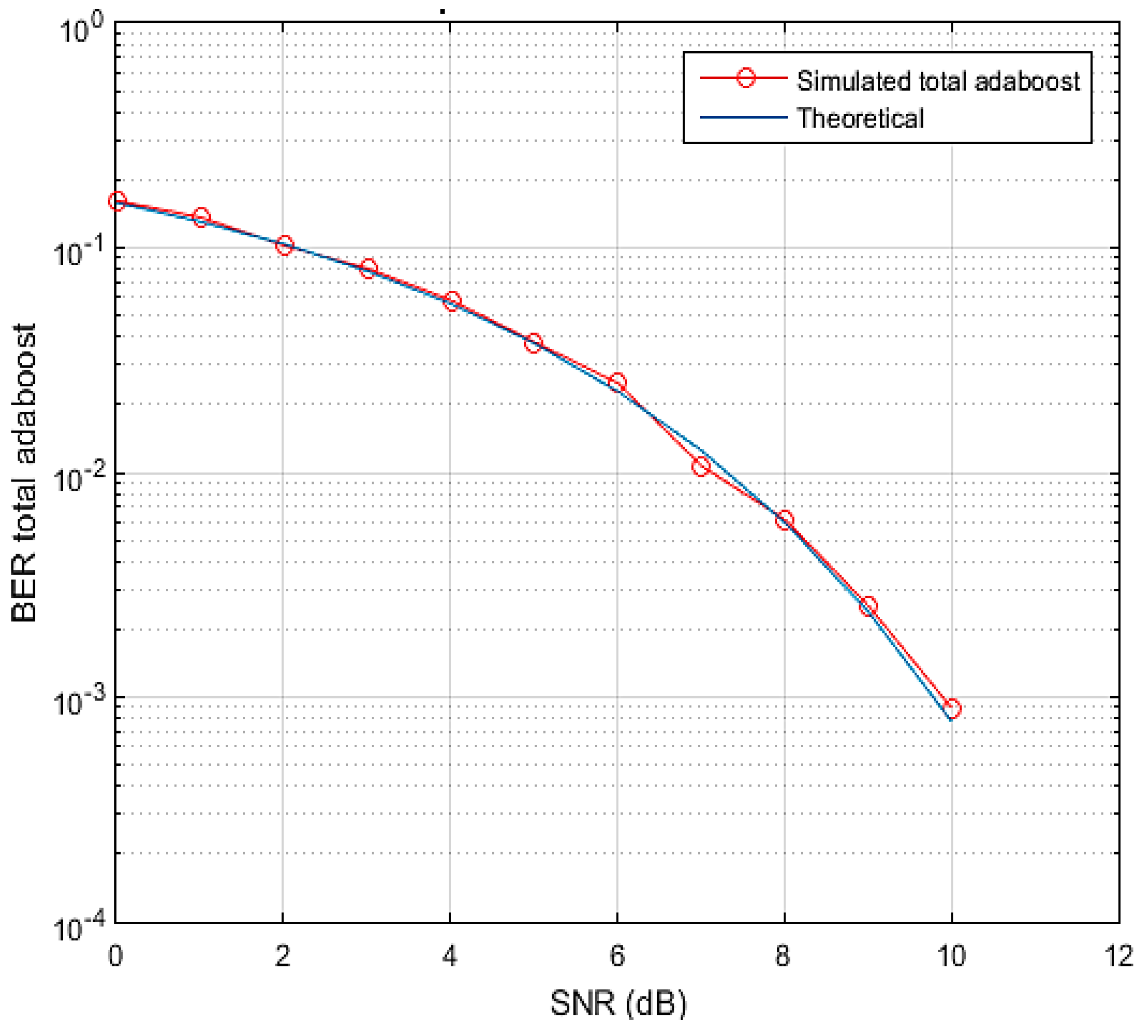
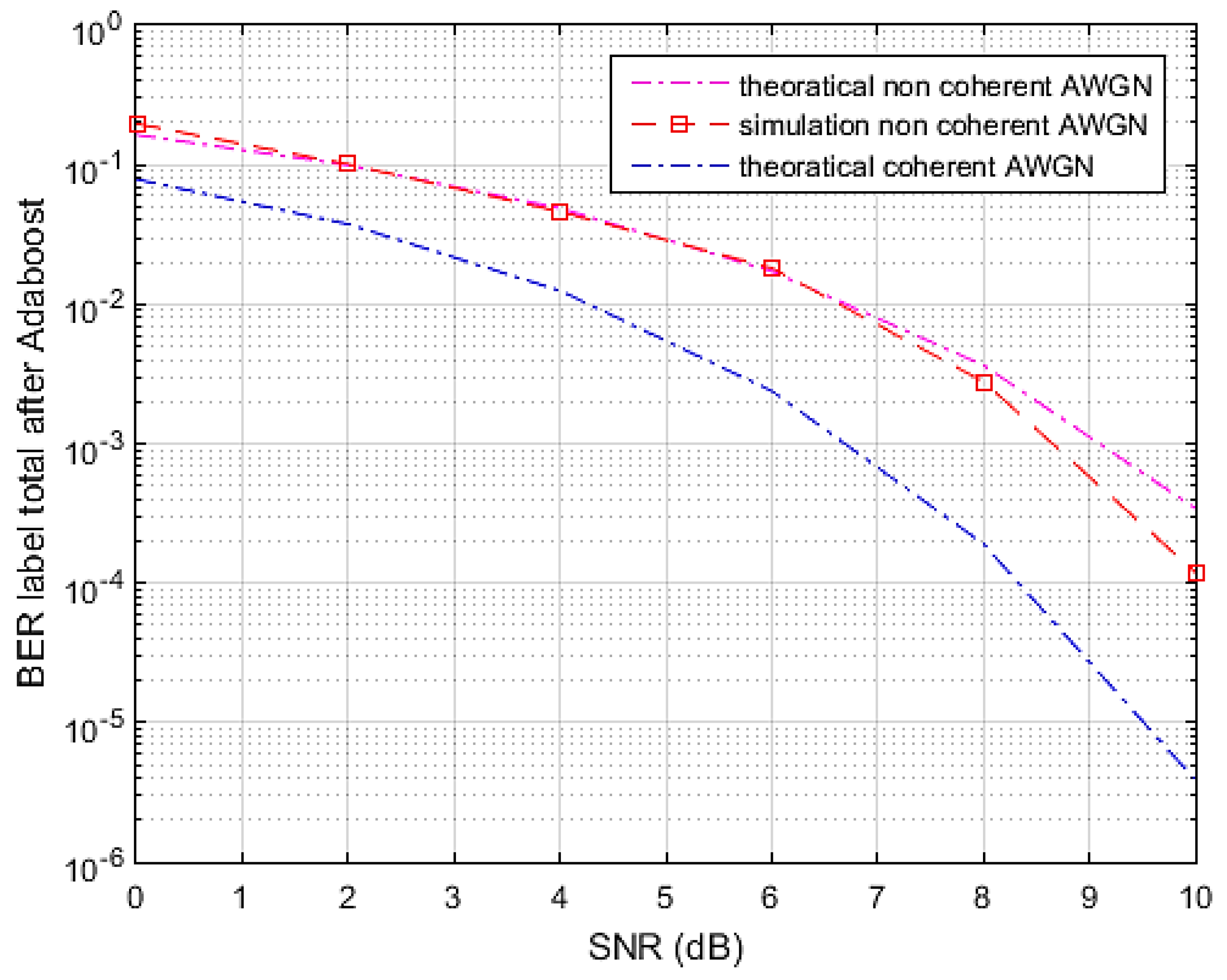



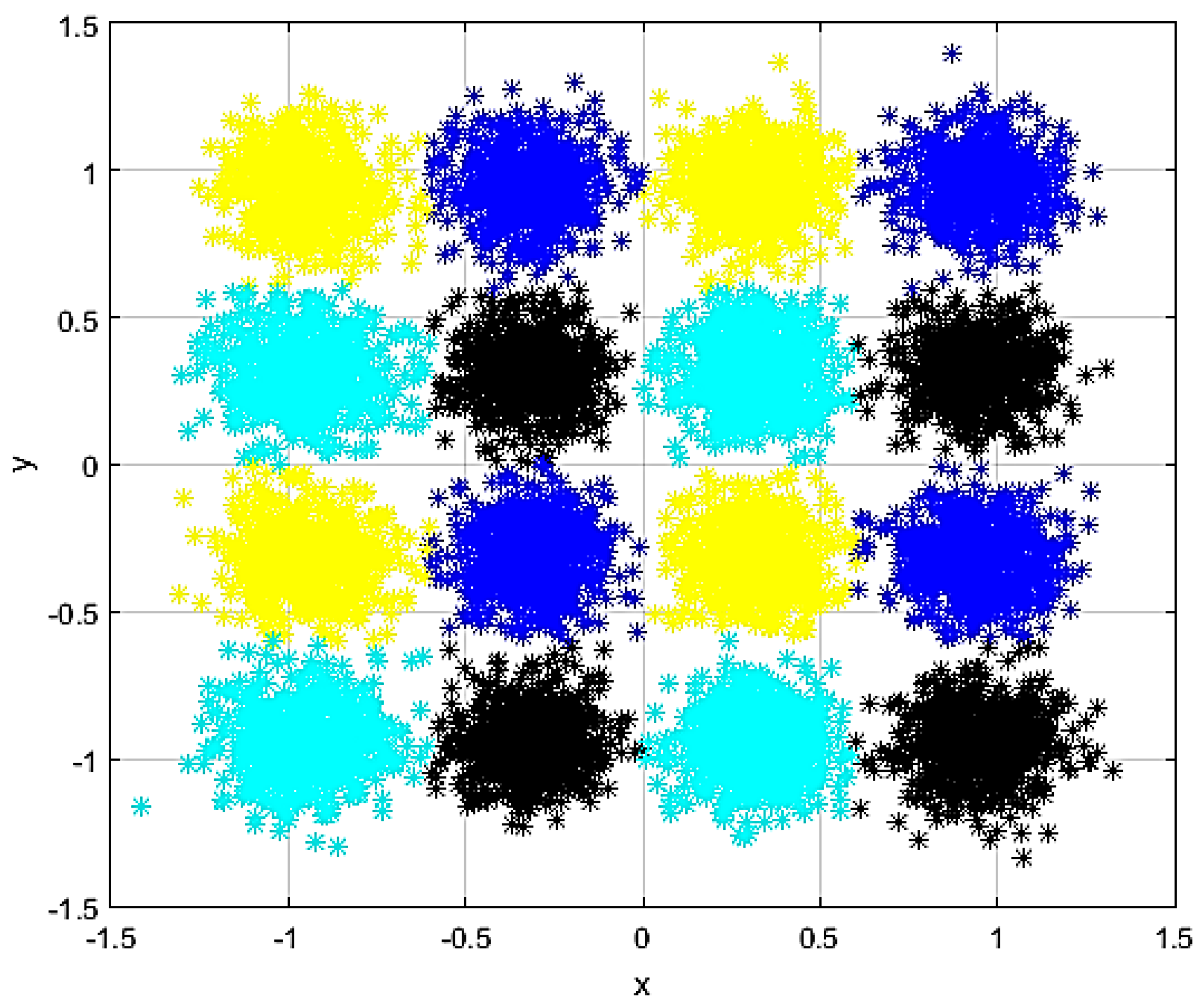


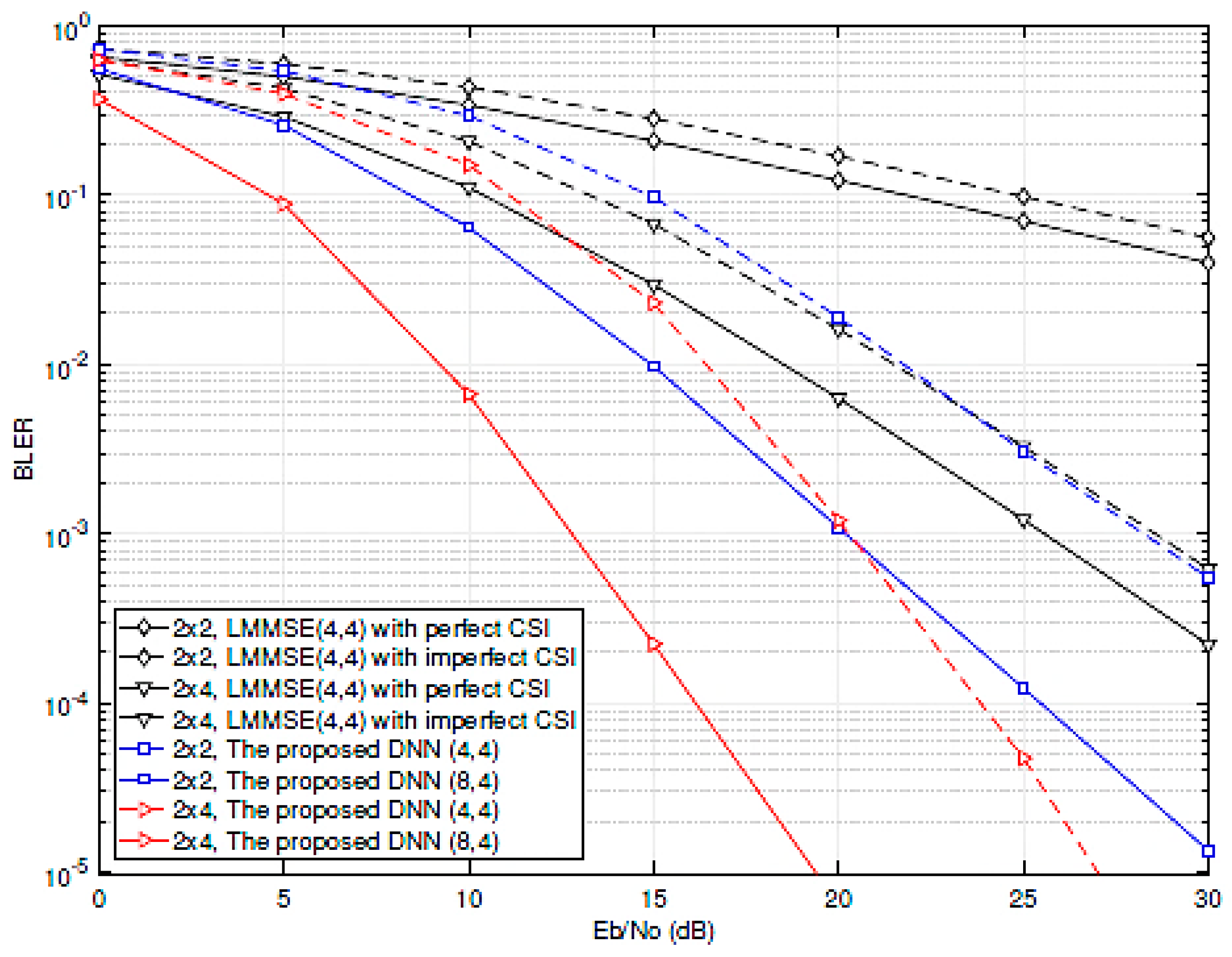
© 2019 by the authors. Licensee MDPI, Basel, Switzerland. This article is an open access article distributed under the terms and conditions of the Creative Commons Attribution (CC BY) license (http://creativecommons.org/licenses/by/4.0/).
Share and Cite
Gamal, H.; Ismail, N.E.; Rizk, M.R.M.; Khedr, M.E.; Aly, M.H. A Coherent Performance for Noncoherent Wireless Systems Using AdaBoost Technique. Appl. Sci. 2019, 9, 256. https://doi.org/10.3390/app9020256
Gamal H, Ismail NE, Rizk MRM, Khedr ME, Aly MH. A Coherent Performance for Noncoherent Wireless Systems Using AdaBoost Technique. Applied Sciences. 2019; 9(2):256. https://doi.org/10.3390/app9020256
Chicago/Turabian StyleGamal, Heba, Nour Eldin Ismail, M. R. M. Rizk, Mohamed E. Khedr, and Moustafa H. Aly. 2019. "A Coherent Performance for Noncoherent Wireless Systems Using AdaBoost Technique" Applied Sciences 9, no. 2: 256. https://doi.org/10.3390/app9020256
APA StyleGamal, H., Ismail, N. E., Rizk, M. R. M., Khedr, M. E., & Aly, M. H. (2019). A Coherent Performance for Noncoherent Wireless Systems Using AdaBoost Technique. Applied Sciences, 9(2), 256. https://doi.org/10.3390/app9020256





